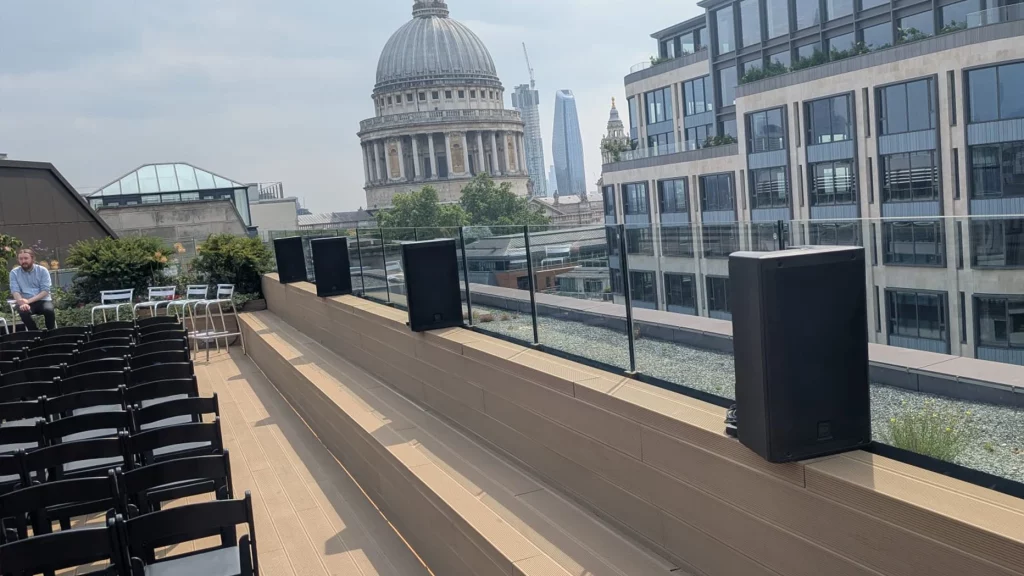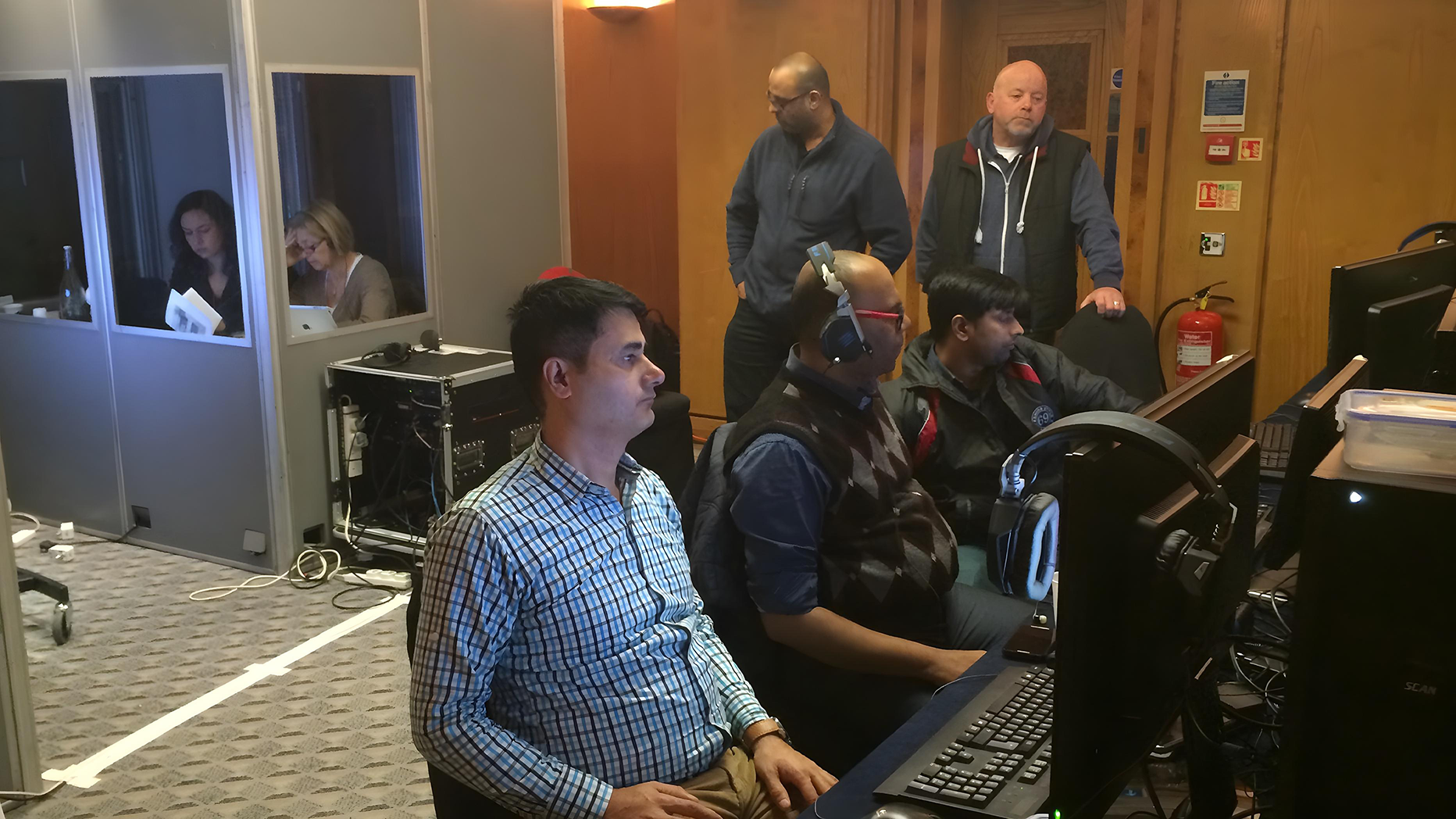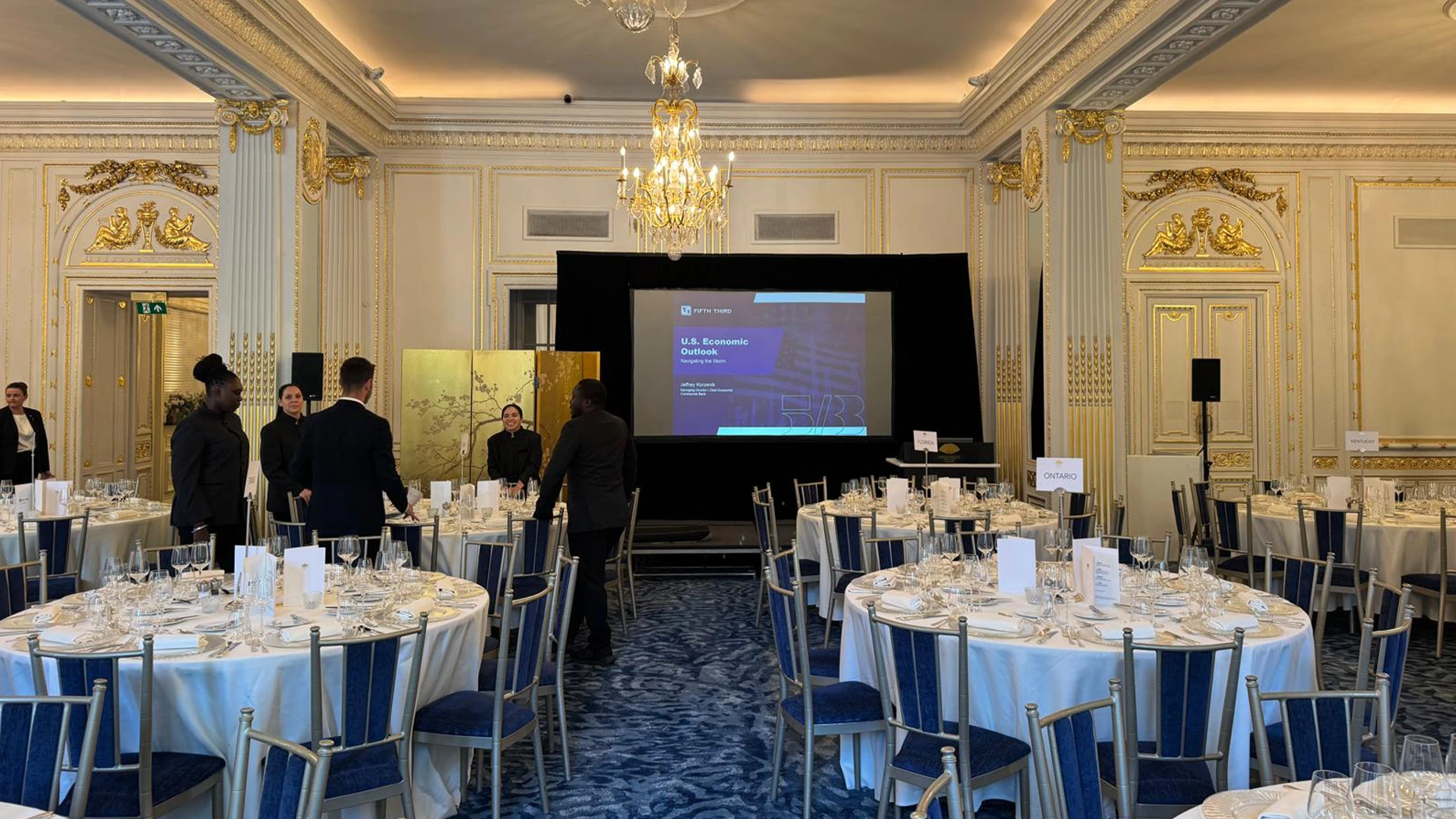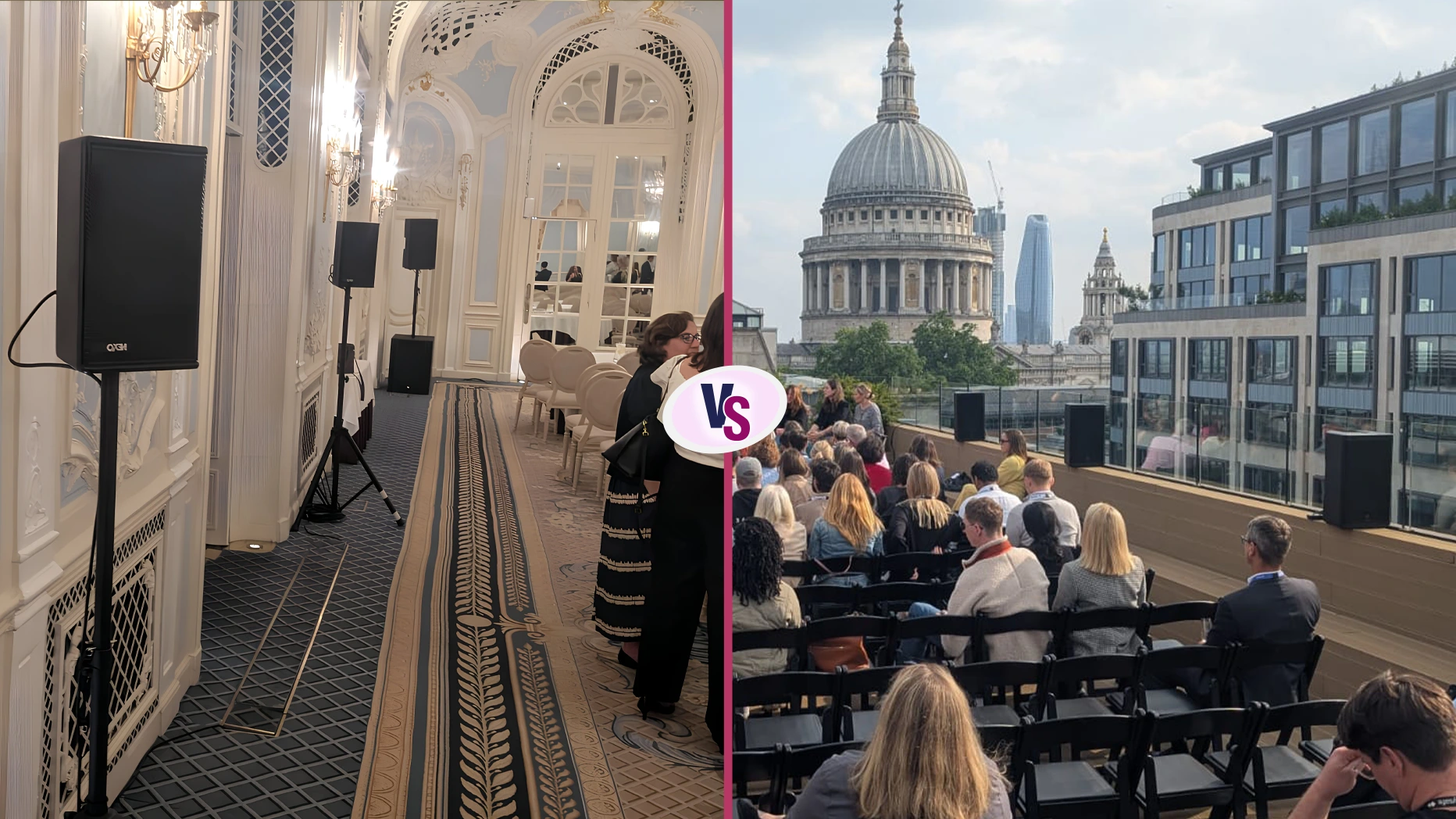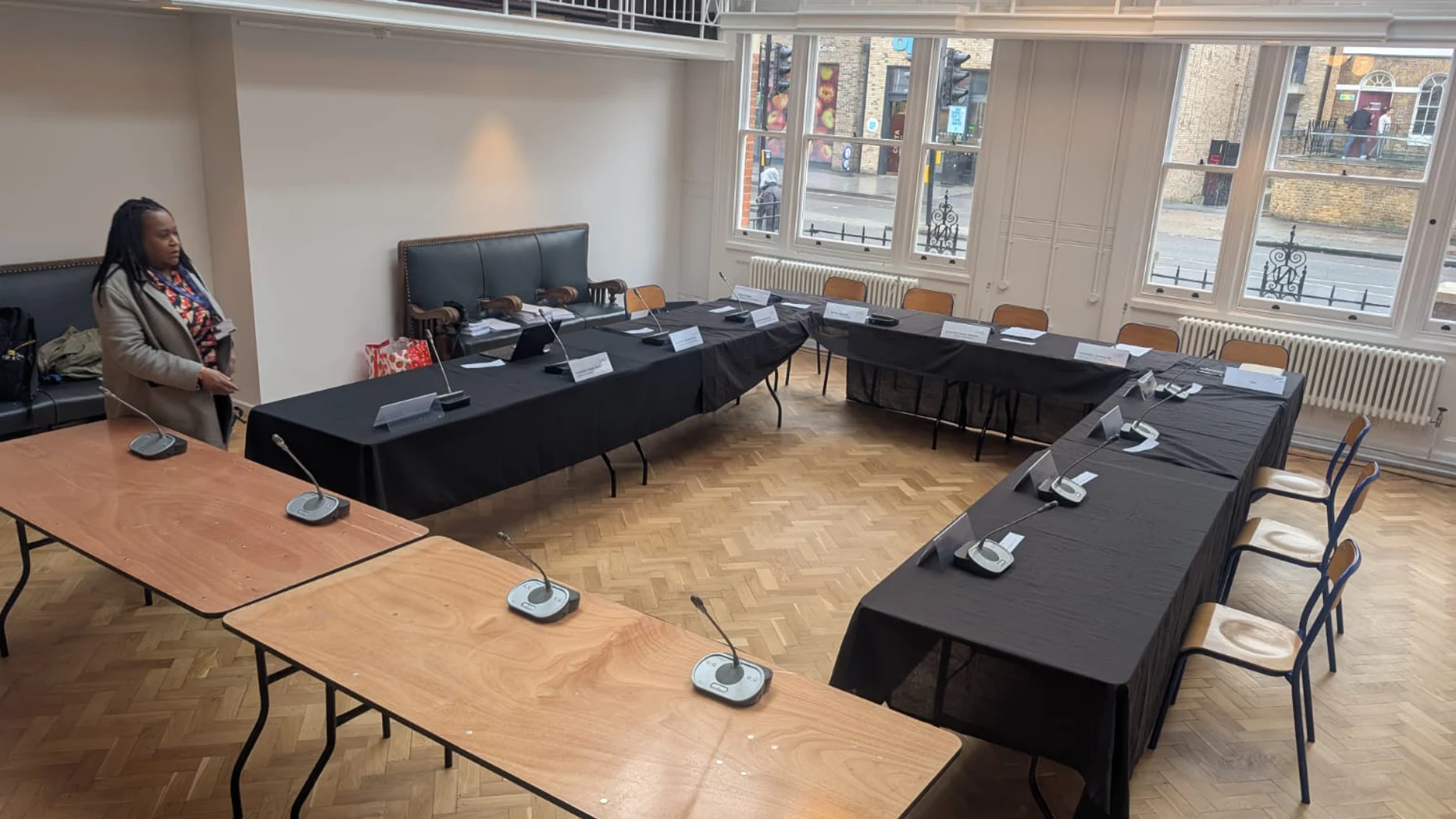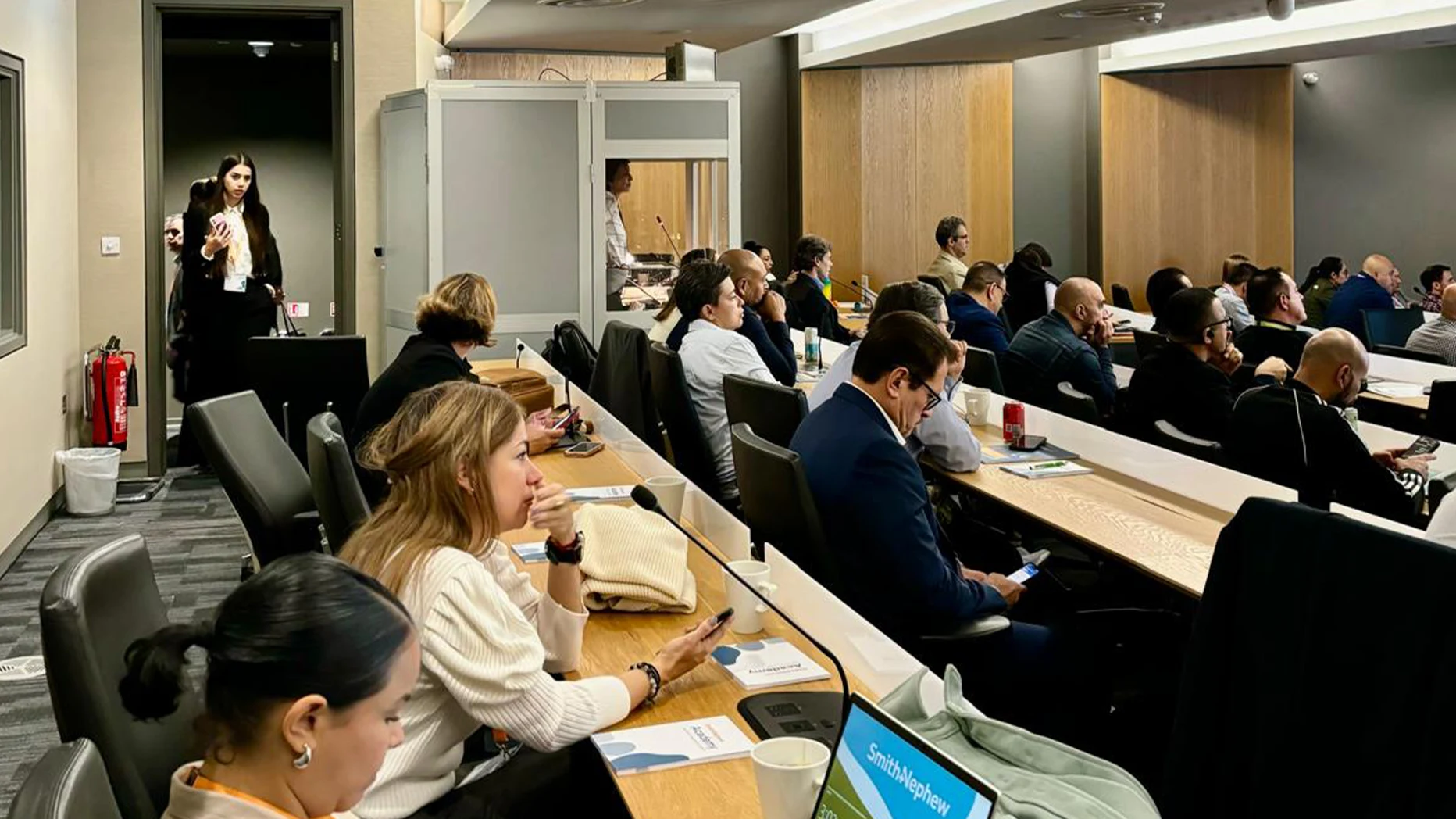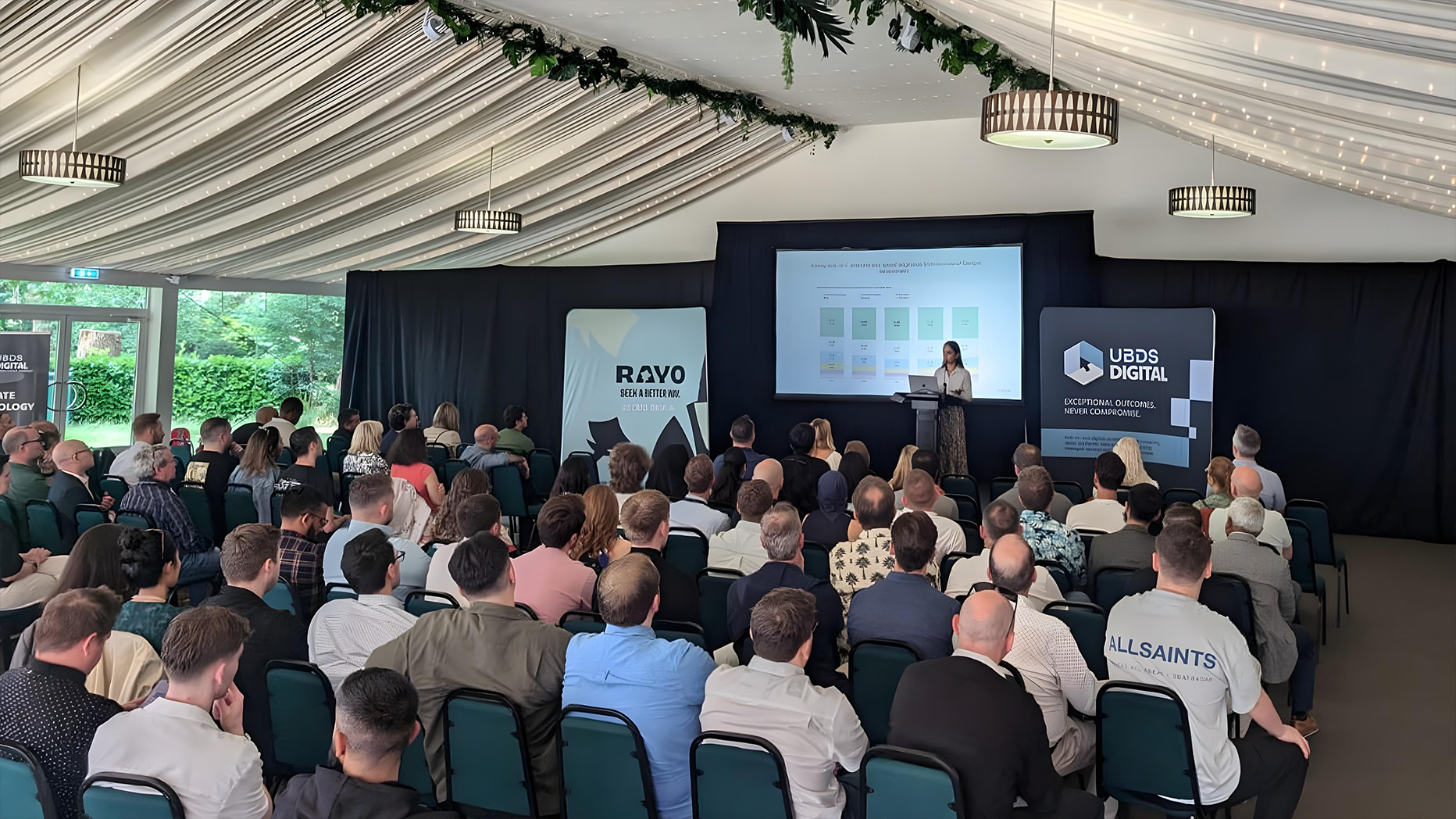When people walk into an event, they might notice the lights, the stage, or the seating. But what they really remember is how the event sounded.
Was the speaker clear? Could everyone hear the music? Did the sound feel balanced and smooth? These questions matter more than people think.
That’s why speaker placement and acoustic design are not just technical details; they are the foundation of a great event experience. From business conferences to product launches, how sound travels through your venue affects every word, every beat, and every impression.
Let’s explore how smart sound planning can turn any event space into a place where everyone hears clearly, engagement stays high, and your message truly lands.
Why sound is more than just speakers
At events, sound affects everything. It shapes the mood, helps people connect with what’s happening on stage, and keeps your audience engaged from start to end. When the sound is off, too quiet, too loud, or echoing, it distracts your guests. Poor acoustics can cause listeners to miss important details, lose focus, or even walk away.
But when sound is done right, everything just works.
Getting speaker placement right matters
Where you place your speakers has a huge impact on how the audience experiences your event. It’s not just about putting speakers on stage; it’s about directing sound evenly across the entire space.
Here’s what expert AV teams consider when planning speaker layout:
1. Height and angle
Speakers should be close to ear level. Angled down slightly, they send sound straight to your guests, not bouncing off the ceiling.
2. Balanced positioning
Speakers must be spaced evenly throughout the room. If you only have sound at the front, people in the back won’t hear clearly. In large rooms, you may need additional “fill” speakers placed at the sides or rear of the space.
3. Avoiding feedback
Microphones and speakers can interfere if placed too close together. AV professionals know how to space and angle everything to prevent screeching sounds or echo.
4. Zoning for multi-level spaces
For venues with balconies or multi-level seating, speakers must be arranged in zones to deliver even sound from top to bottom.
Acoustic design: Solving real sound problems
Speaker placement is one part of good sound. The other is acoustic design, how it should behave inside the room. Every space has different sound issues based on:
- The size of the room.
- Ceiling height.
- Surface materials (like glass, concrete, or wood).
- Objects in the space (pillars, walls, furniture).
- It also depends on whether the event is indoors or outdoors.
Let’s look at common problems and how acoustic design fixes them.
| Sound Problem | Smart Solution |
| Echo and Reverberation | Add soft materials like acoustic panels, rugs, or curtains to absorb bouncing sound. |
| Too much bass | Use bass traps in corners to balance low-frequency sounds. |
| Inconsistent sound levels | Use multiple speakers and test with sound modeling software to even out volume. |
| Outdoor sound loss | Use directional speakers and weatherproof gear to fight wind and sound fade. |
| Sound reflections | Place diffusers on walls to scatter sound without reducing energy. |
| Noise from outside | Use sound isolation panels or partitions to keep external noise out. |
| Visual obstructions | Set up elevated screens and clear LED walls so everyone can see and hear. |
AV challenges event planners face (and how to fix them)
Planning AV for events is not easy, especially in tricky spaces. Here’s how to handle common venue challenges with expert sound planning:
Space limits
In small rooms, large speakers won’t work. Compact, high-performance speakers are better. They take up less space while delivering full sound.
Multi-level venues
Balconies or split-level floors need their own speaker zones. AV teams make sure everyone, upstairs or downstairs, hears the same things at the same volume.
Rooms with hard surfaces
Glass, metal, and stone reflect sound. That can cause an echo or ringing. Acoustic panels and carpets reduce this problem quickly.
Outdoor events
Sound travels differently outdoors; it spreads and fades faster. Weather-resistant equipment and careful speaker placement help keep the sound focused.
Last-minute changes
Plans can shift on the day of the event. Expert AV teams are ready to make fast changes without stopping the event or disturbing guests.
Effective tips to improve event sound
If you want better sound quality without a full redesign, here are some easy yet practical tips that help:
- Use rugs or carpet: They help absorb sound, especially in empty rooms.
- Hang thick curtains: Soft materials reduce echo.
- Test the space early: Always check the sound quality from the back of the room.
- Add acoustic panels: These reduce bouncing sounds and improve clarity.
- Angle speakers toward the crowd: Don’t point them at walls or ceilings.
Must-have equipment for a high-quality sound system
The right gear matters. Here’s what experienced AV teams use to get clean, clear sound:
- Line array speakers: Send sound far and wide in big rooms.
- Subwoofers: Add deep bass to music and video.
- Digital Mixers: Let sound engineers balance audio in real time.
- Wireless Microphones: Allow clear speech without wires in the way.
- Acoustic Panels & Diffusers: Reduce echo and manage sound flow.
- Bass Traps: Stop low-end boom from overpowering your mix.
- Sound Isolation Equipment: Keeps outside noise out and inside sound clear.
- Stage Monitors: Help performers hear themselves on stage.
- Equalizers: Fine-tune audio so it fits your room’s shape and surfaces.
- Speaker Stands: Raise speakers to the right level for better sound.
- Signal Processors & Cabling: Make sure all gear works smoothly together.
Why you should work with AV professionals
Great equipment is only part of the solution. To truly master sound, you need experience.
Some event production companies, like AV Productions, based in Central London, specialize in AV design, setup, and support for corporate and business events. They understand how to:
- Visit your venue and assess it.
- Use software to model sound paths.
- Choose the right equipment.
- Plan the speaker layout.
- Adjust settings during the event.
- Handle last-minute changes with ease.
Having pros on your team means your event sounds good from the first speaker to the final word.
Final thoughts
Sound is not just background noise. It’s part of the message. When you take the time to plan your speaker placement and acoustic design, you help your guests stay focused, feel comfortable, and remember your event.
From corporate conferences to product launches, a smart AV setup turns your space into a powerful storytelling environment. If you’re planning a business event, working with AV experts like AV Productions ensures your message gets heard, loud, clear, and exactly the way you want.Need help with your event’s sound? Talk to our trusted AV hire team who know how to make your message shine. We offer rental AV equipment, speaker setup, and 24/7 technical support throughout the event.
